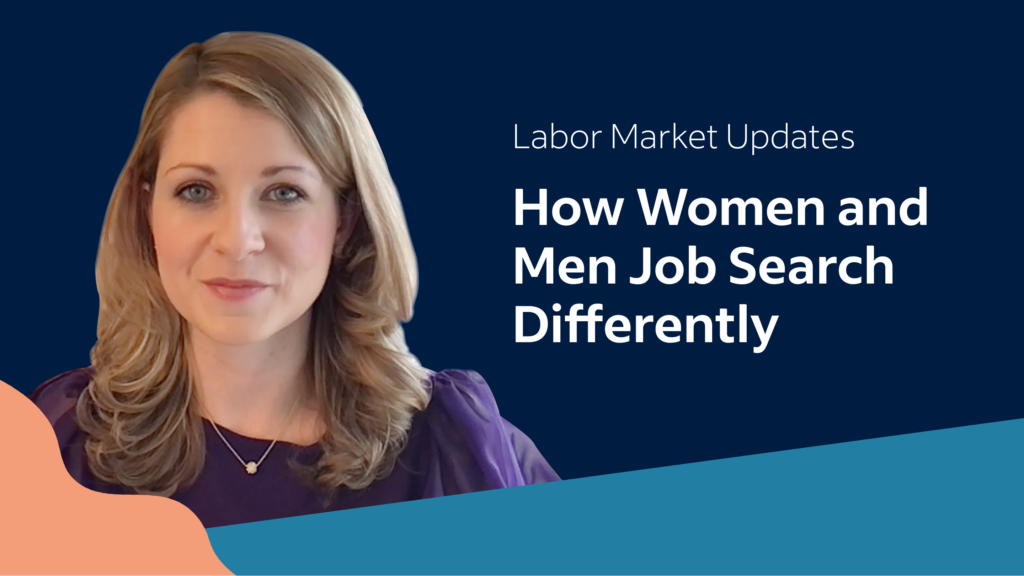Key Points
- During the pandemic’s initial phase, demand for workers in sectors that predominantly employed women was especially crippled.
- Lack of childcare and other constraints on women’s ability to work skyrocketed.
- Loss of pay and work experience set women back further than they were before the pandemic.
- The reversal of Roe v. Wade is another factor darkening the long-run outlook for women’s economic wellbeing.
As the pandemic approaches the two-and-a-half-year mark, economic recovery is shaping up differently for women and men. Women bore more of the initial brunt of COVID-19’s economic damage. Between February and April 2020, female workers lost an aggregate of 13.5 million jobs while posting a net reduction of 1.5 million more jobs than men. These losses were rooted in the pandemic’s powerful shocks to both demand for and supply of labor. Sectors that predominantly employed women, like food service and leisure and hospitality, were devastated. At the same time, a range of factors, like finding childcare, pushed many women out of the labor force, draining labor supply.
As the acute phase of the pandemic waned, economic recovery has been rapid, especially compared with past recessions. However, gender differences are pronounced in the rebound and women’s share of employment remains below its February 2020 level. Furthermore, work experience and paychecks lost during the pandemic have not been recouped.
It’s not as if women had achieved equality before the pandemic. The gender pay gap has persisted for decades and women’s labor force participation has always lagged men’s. (Labor force participation is defined as holding a job or actively searching for one.)
This research brief explores labor market trends that have affected women during the pandemic. In addition, we look at women’s darkened long-term economic outlook following the Supreme Court’s reversal of Roe v. Wade.
A tale of two shocks
COVID-19’s economic damage was vast, but it was particularly stark in industries that disportionately employed women. For example, jobs in education and healthcare services, where over 75% of workers were female as of March 2020, tumbled 11.5% from February 2020 to April 2020. By contrast, in trade, transportation and warehousing, where less than 30% of workers were female, jobs fell just 8.7% over the same period.
This sectoral unevenness reflected COVID-19’s nature. Service jobs, particularly at the lower end of the wage spectrum, often require some face-to-face interaction. Women, who are disportionally represented in lower-wage and part-time jobs, saw this unevenness in their unemployment rate. Men’s unemployment rate increased nearly fourfold from February to April 2020, while women’s jumped nearly fivefold, peaking at 16.1%. Similarly, in April 2020, women filed nearly 850,000 more continuing unemployment claims than men.
At the same time, racial disparities emerged. The share of Black and Hispanic women of prime working age (25-54) holding a job plunged more than 15% between February and April 2020. White and Asian women in the same age group experienced substantial economic damage too, but less severely than their Black and Hispanic counterparts. Across races and ethnicities, the share of prime-age men holding jobs fell less than the share of prime-age women during the early months of the pandemic. While COVID-19 touched every aspect of the economy, its damage hit women disproportionately — especially women of color.
COVID-19’s impact on labor supply was profound, particularly among female workers. With schools and daycare facilities shuttered, women with young children spent more time than their male counterparts providing secondary childcare — that is, taking care of children while engaged in other activities. Unsurprisingly, employment of mothers with young children dropped more than fathers with young children.
This was not uniform across all groups of workers. Women who were in occupations that could be done remotely, like tech and finance, didn’t exit the workforce as much as women in in-person occupations.
In all, many women — and especially those with children — were stretched to the brink. Some were pulling double duty, working while simultaneously providing childcare, while others found themselves jobless.
A robust recovery, but gaps remain
COVID-19’s impact on the labor market has been extraordinary. The pandemic’s onset triggered the highest job losses on record. And the subsequent recovery has been notably brisk compared with rebounds from previous recessions. In the six months following April 2020 (when the COVID-19 recession officially ended), payroll gains averaged nearly 2 million jobs per month. That’s a far cry from the average of 203,000 jobs lost per month in the six months following the official end of the Great Recession. Unlike the Great Recession and its “jobless” recovery, today’s strong labor market is a result of the economy’s relatively good footing before the pandemic and its impressive bounceback.
Despite this swift recovery, gender differences in today’s labor market have intensified. Women already had a lower labor force participation rate than men before the pandemic. Then, when COVID-19 hit, participation of prime-age women in the labor market declined further and rebounded more slowly than for prime-age men, though some of that may be because occupations that skew female were hit harder.
Additionally, women still aren’t back to the employment level they had in February 2020. Men exceeded their February 2020 employment level in February 2022, but women are still behind.
This has deep ramifications. During the pandemic, women have missed out on nearly 12 million more months of job experience and paychecks than men compared with what would have been the case if male and female employment levels had remained constant. This difference is particularly notable because men represented a larger share of the workforce than women in February 2020.
Factors dampening women’s job search
What are some of the factors that have weighed on women during the pandemic, especially those in the prime 25-54 working age group? Indeed’s Job Search Survey shows, among those who report they are not searching for work urgently, prime age, unemployed women cite employment of their spouses and childcare significantly more often than men as reasons their search for work is not pressing.
Childcare and other factors affecting women disproportionately may not be new reasons why unemployed prime-age women are not searching for jobs urgently. But even though these factors were significant before the pandemic, women have still given up ground in relative work experience and pay.
Hiring Lab asked job seekers whether they felt comfortable asking for raises or promotions. In late 2020, when asking for raises women had lost comfort more than men since the onset of the pandemic. These are not small matters. Losing out on work experience and pay hikes can have a compounding effect on lifetime earnings and hinder opportunities to become organizational leaders.
Despite the disparate damage women suffered from COVID-19, there are a few silver linings. Employers are now more likely to accommodate flexible schedules or offer remote work, which can benefit women. Resume gaps, which women are more likely to have, have lost some of their stigma. The key question is whether these improvements hold in the long-run. If promotions skew toward in-person employees or resume gaps raise questions again, labor market inequalities will persist.
Labor market inequalities are not new
Recessions are an inevitable part of the business cycle, but a downturn that hits women harder than men is unique. Men’s employment has historically been more cyclical than women’s. The Great Recession is a prime example. But, during the pandemic, the tables were substantially turned, giving rise to the expression “She-cession”.
COVID-19 struck after a period when women’s progress in the work world had stalled. In the US, female labor market participation started to decline around the turn of the millennium and women have never reached 50% of total employment. Meanwhile, despite shrinking over recent decades — amid ongoing debates on the reasons why — the gender pay gap persists, with women earning 83 cents for every dollar earned by men.
While women’s labor participation has grown in other advanced economies, some of the failure to gain in the US may be due to a lack of “family-friendly” policies, such as paid family leave. Likewise, economic recoveries in other advanced economies, like those in Europe and Canada, have looked different than the one in the US. Some of this reflects different government responses, like Europe’s furlough schemes, which allowed employers to retain workers rather than lay them off.
What’s to come for women following the overturn of Roe v Wade?
As women face persistent inequalities, their economic progress faces another setback. The Supreme Court’s reversal of Roe v Wade will have far-reaching harmful economic effects on women. In the immediate aftermath of the ruling, the economic impact is still fluid as employers, and state and local governments, begin to react. However, the long-run effects of the decision will be substantial.
A study by a reproductive health research group at the University of California San Francisco makes clear that women denied an abortion are more likely to experience economic hardship. Economic research consistently shows that legal access to abortion has positive educational and employment impacts, particularly for black women (2021, 2020, 2017, 2000). Access to abortion means women in their 20s and 30s are more likely to work in jobs covered by Social Security and less likely to rely on public assistance. What’s more, the benefits of access to abortion extend beyond economic wellbeing. Legal abortion is found to substantially reduce non-white maternal mortality rates and reduce child neglect and abuse.
For the past 49 years, the US economy has operated on an evolving social contract that included the principle that women should have autonomy over their own bodies. Removing that autonomy from the social contract will have ramifications that economists will continue to research. Policymakers weigh many different aspects in deciding legislation, but the economic effects are clear cut. Overall, restricting access to abortion will hinder women’s access to education and employment. At the same time, if individuals who have undergone or performed abortions, or helped arrange them, are prosecuted, criminal records could be barriers to employment.
In the face of these long-run effects, it’s apparent that the decision is weighing on many job seekers right now.
On June 24, the day the Supreme Court ruling was released, the share of job searches on Indeed for phrases like “abortion” and “reproductive rights” soared. As of June 28, compared with the previous year, the share of searches containing abortion-related terms jumped 1,461%. Given that the word “abortion” was the top phrase used by jobseekers related to this issue, it is difficult to know what precisely they were looking for. But it’s clear the ruling caught people’s attention in an extraordinary way.
The Supreme Court’s decision is set to have compounding negative effects on the economic wellbeing of women, aggravating labor market inequities that worsened during the pandemic. In the long run, women’s participation in the US labor market will be significantly altered by this profoundly disruptive ruling. At this juncture, we can only begin to assess the full impact of this momentous policy reversal.
Methodology
The data from the Job Search Survey is based on 11 online surveys of 5,000 US adults ages 18-64 starting in late May 2021 and continuing through March 2022. Surveys were conducted May 26-June 3, July 12-20, August 10-18, September 13-29, October 11-20, November 8-18, December 6-22, 2021, and January 10-24, February 7-21, March 7-21, April 11-23, May 9-23, and June 12-27, 2022. Weights were applied to each survey to match respondent distributions across age, educational attainment, race/ethnicity, and sex with the 2020 Current Population Survey’s Annual Social and Economic Supplement.
Searches for abortion terms were defined as any query containing “abortion,” “reproductive rights,” “reproductive healthcare,” “pro-choice,” or “pro choice.” The data shown in the searches graph are a seven-day moving average.



